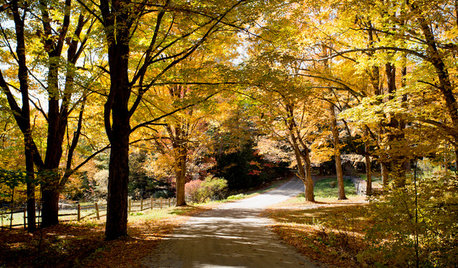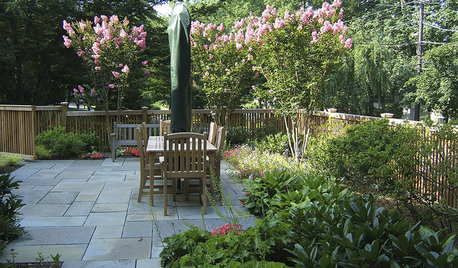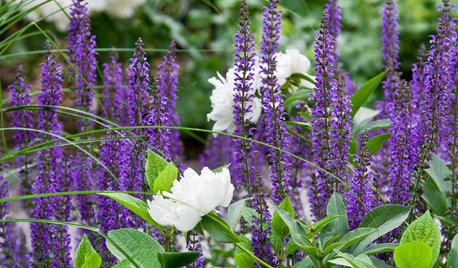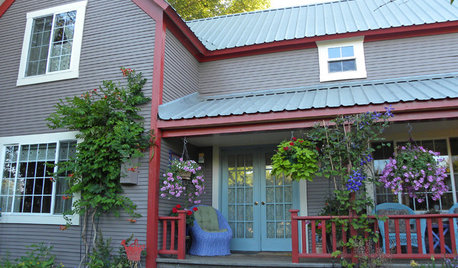Explosions of August
wieslaw59
11 years ago
Related Stories

GARDENING GUIDESLessons in the Rewards of Selfless Gardening
Let go of gardening for your own vision and watch the garden’s own true vision come forth
Full Story
FALL GARDENINGHouzz Call: Show Us Your Autumn Views
Share your pictures of fall foliage and decor in the Comments. Your photos may be featured in an upcoming story!
Full Story
PRODUCT PICKSGuest Picks: Colorful Patterned Area Rugs for All Tastes
From subtly sophisticated to downright swirltastic, these area rugs will please the eye while cushioning the feet
Full Story
GARDENING GUIDESGreat Garden Combo: 3 Wonderful Plants for a Deer-Resistant Screen
Protect your privacy and keep deer at bay with a planting trio that turns a problem garden area into a highlight
Full Story
DISASTER PREP & RECOVERYHow to Prep for Disaster Insurance Claims
Tools and tips for making an inventory list, documenting damage to your home, and working with your adjuster
Full Story
GARDENING GUIDESGreat Design Plant: Crape Myrtle
With long-lasting blooms and gorgeous exfoliating bark, this ornamental tree brings bright color and a unique form to the landscape
Full Story
GARDENING GUIDESGarden-Friendly Native Alternatives to Overplanted Exotics
There are lots of gorgeous, wildlife-friendly native plants ready to make an appearance in your garden
Full Story
EDIBLE GARDENSHow to Grow Your Own Sweet Summer Crops
This guide will help any gardener get started on growing the freshest warm-season veggies and berries for summer
Full Story
GARDENING AND LANDSCAPINGGarden Tour: Colorful, Serene Woodland Near Boston
Exuberant perennials, outdoor rooms and a surrounding woodland come together to create a beautiful landscape in Massachusetts
Full Story
HOUZZ TOURSMy Houzz: An Oregon Cottage With 21 Flavors of Color
A profusion of paint colors plus inviting porches and gathered pieces create a welcoming feel in a retired couple's 100-year-old home
Full Story







rouge21_gw (CDN Z5b/6a)
Karolina11
Related Professionals
Ballwin Landscape Architects & Landscape Designers · Folsom Landscape Architects & Landscape Designers · Andover Landscape Contractors · Belmont Landscape Contractors · Doctor Phillips Landscape Contractors · El Reno Landscape Contractors · Eureka Landscape Contractors · Framingham Landscape Contractors · Gallatin Landscape Contractors · Hayden Landscape Contractors · Hickory Hills Landscape Contractors · Huntington Landscape Contractors · Nutley Landscape Contractors · South Farmingdale Landscape Contractors · Weslaco Landscape Contractorscoolplantsguy
mistascott
ken_adrian Adrian MI cold Z5
sunnyborders
coolplantsguy
rouge21_gw (CDN Z5b/6a)
FrozeBudd_z3/4
wieslaw59Original Author
sunnyborders
rouge21_gw (CDN Z5b/6a)
rouge21_gw (CDN Z5b/6a)
sunnyborders
wieslaw59Original Author
sunnyborders
Thyme2dig NH Zone 5
rouge21_gw (CDN Z5b/6a)
cyn427 (z. 7, N. VA)
sunnyborders
wieslaw59Original Author
Thyme2dig NH Zone 5
mxk3 z5b_MI
sunnyborders
bouquet_kansas
katob Z6ish, NE Pa
mistascott
sunnyborders
wieslaw59Original Author
sunnyborders
rouge21_gw (CDN Z5b/6a)
sunnyborders
Bumblebeez SC Zone 7
daysquid
wieslaw59Original Author
NickDanger1